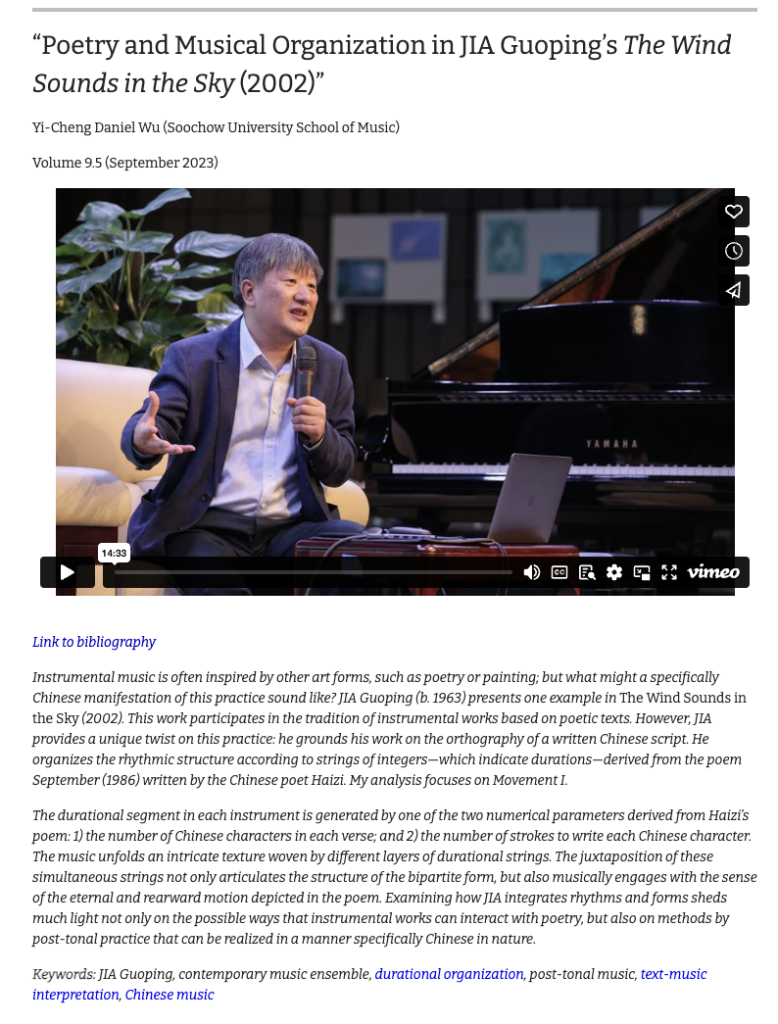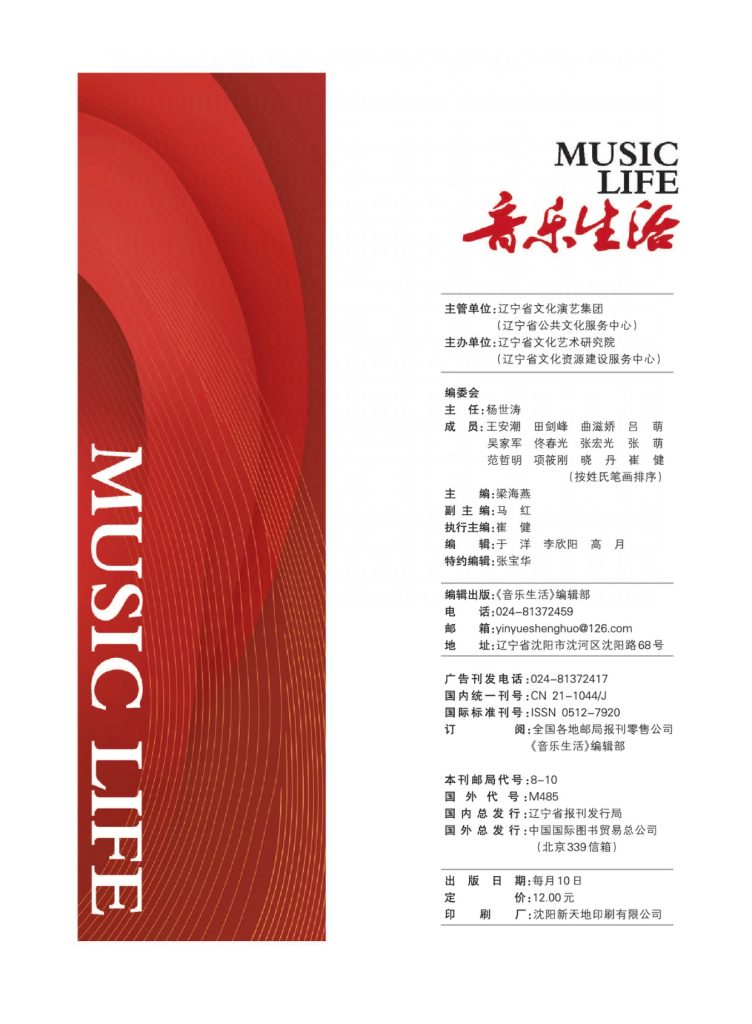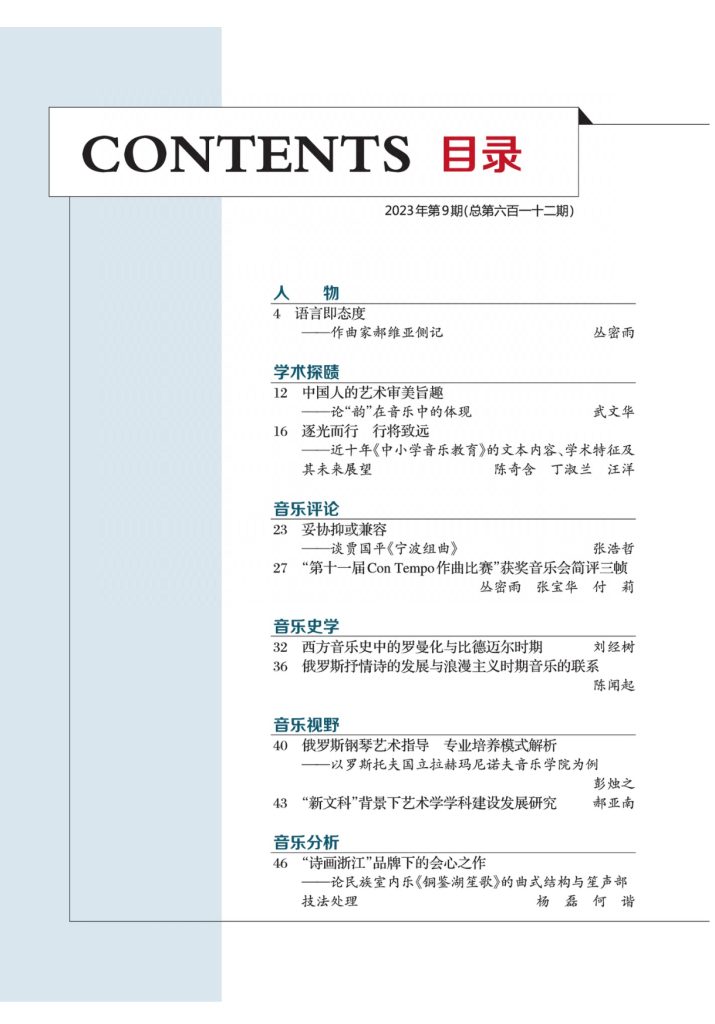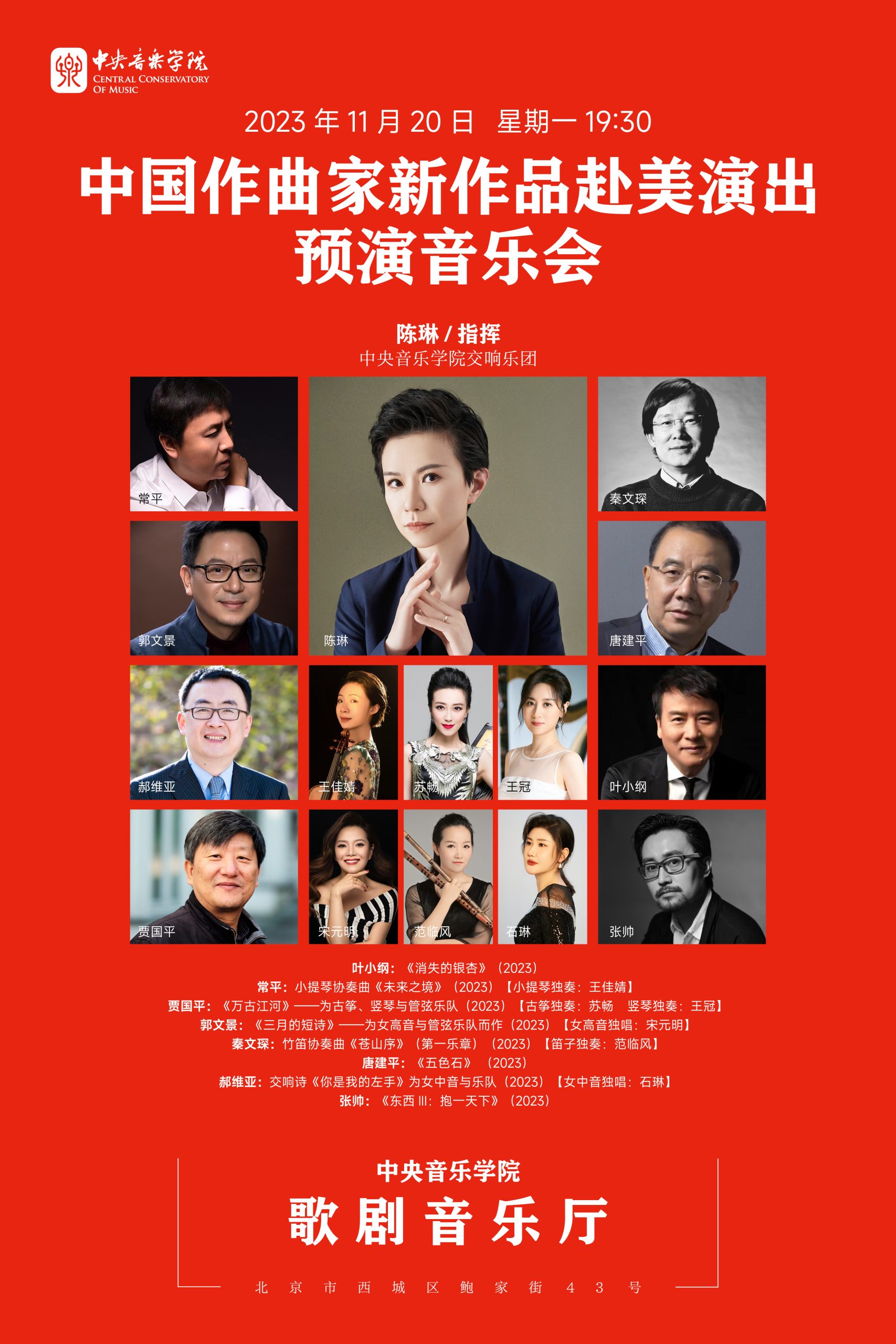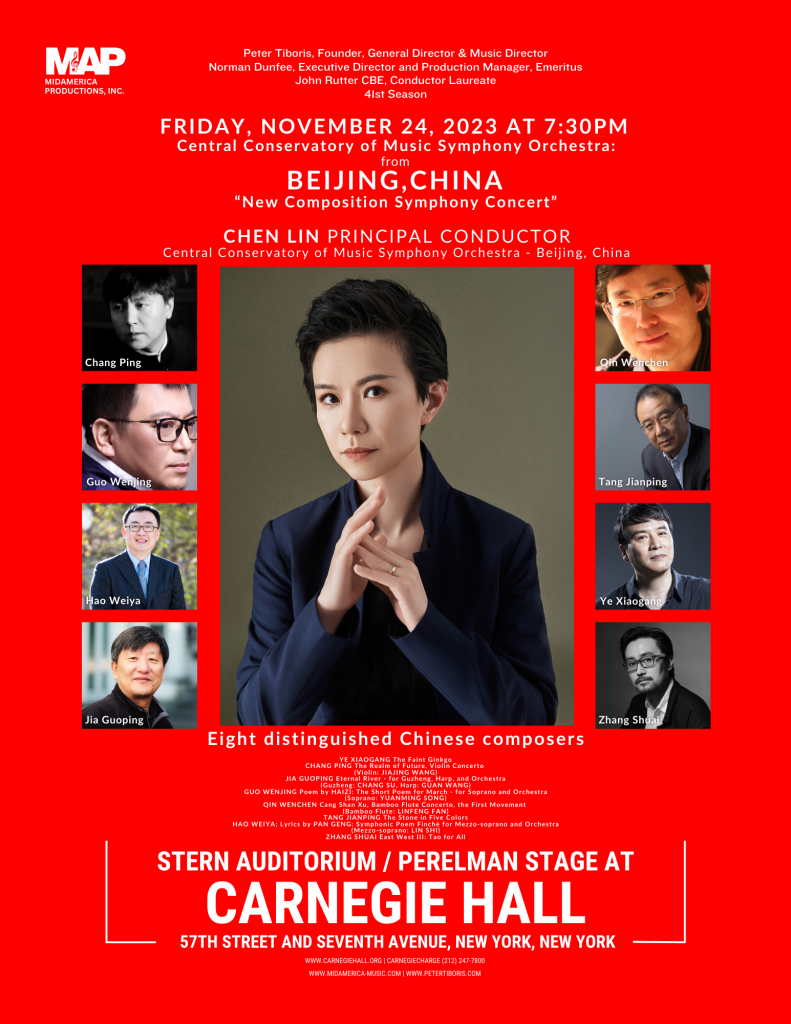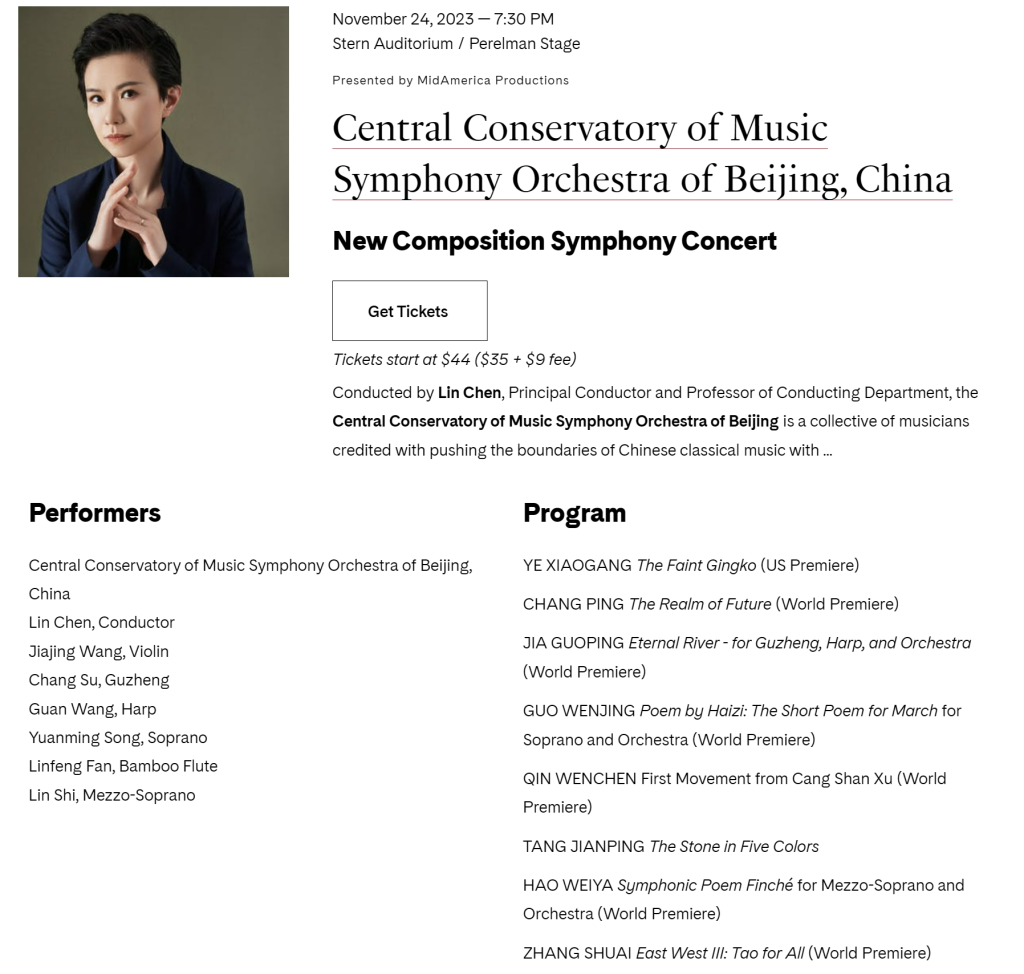Eternal River – for Guzheng, Harp and Orchestra(2023)
长度:约10分
古筝:苏畅 竖琴:王冠
世界首演
曲目介绍
河流是生命之源,也是文明之光。亘古奔涌的江河,滋养了不同地域人类古文明的诞生与壮大。它不仅是人类繁衍生息的物质条件与地理空间,也是人类思想、语言、情感等得以形成与发展的精神之本。
此作品借用历史学家许倬云《万古江河》一书之名,力图在作品中展现一条绚烂、多变的时间之河、历史之河。从涓涓细流到历经暗礁、险滩与风暴,作曲家意在以河流隐喻人类文明发展的艰辛历程。
Program note
JIA GUOPING Eternal River – for Guzheng, Harp and Orchestra(2023)
Duartion: ca.10 min.
Guzheng: SU Chang, Harp: WANG Guan
World premiere
Rivers are not only the source of life but also the light of civilization. The everlasting rivers give life to the ancient human civilizations and grow in many different regions. They are not only the conditions and spaces for human life, but also the spiritual foundation for the development of human thoughts, languages, emotions, etc.
The name of this work originally came from the book Wangu Jianghe (Eternal River) by historian Cho-yun Hsu, trying to show a splendid but varied river of time and history in the work. The river starts from a trickle of streams and rushes through reefs, rapids and storms, which is used by the composer as a metaphor for the arduous journey of human civilization development.

